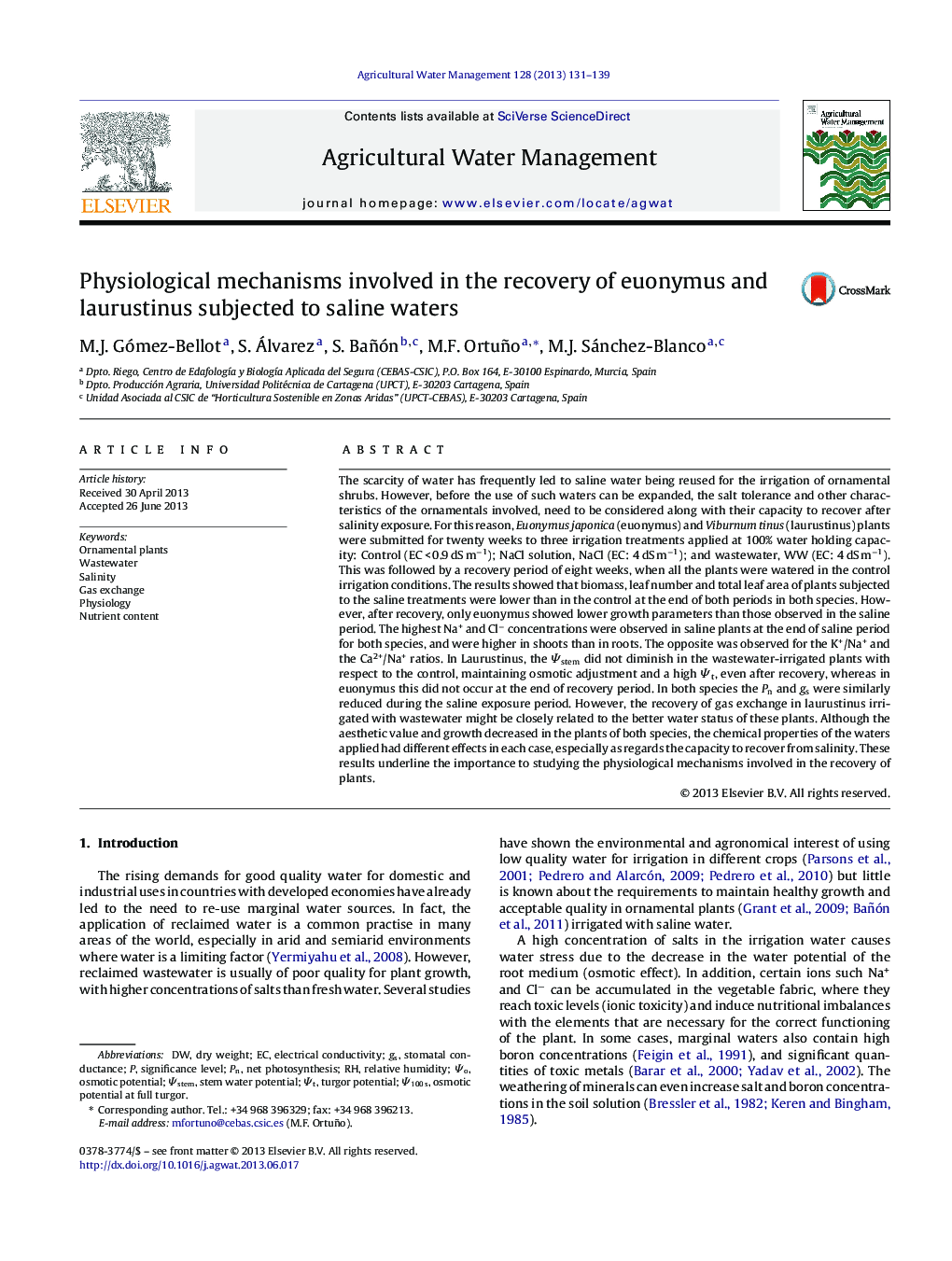| کد مقاله | کد نشریه | سال انتشار | مقاله انگلیسی | نسخه تمام متن |
|---|---|---|---|---|
| 6364102 | 1622951 | 2013 | 9 صفحه PDF | دانلود رایگان |
عنوان انگلیسی مقاله ISI
Physiological mechanisms involved in the recovery of euonymus and laurustinus subjected to saline waters
دانلود مقاله + سفارش ترجمه
دانلود مقاله ISI انگلیسی
رایگان برای ایرانیان
کلمات کلیدی
osmotic potential at full turgorΨstemΨtΨo - آه، آرهGas exchange - تبادل گازElectrical conductivity - رسانایی الکتریکیRelative humidity - رطوبت نسبیSignificance level - سطح اهمیتSalinity - شوریWastewater - فاضلاب یا پسابnet photosynthesis - فتوسنتز خالصPhysiology - فیزیولوژیNutrient content - محتوای تغذیه ایStomatal conductance - هدایت گرمایشیdry weight - وزن خشکStem water potential - پتانسیل آب ساقهOsmotic potential - پتانسیل اسمزیturgor potential - پتانسیل تورگورOrnamental plants - گیاهان زینتی
موضوعات مرتبط
علوم زیستی و بیوفناوری
علوم کشاورزی و بیولوژیک
علوم زراعت و اصلاح نباتات
پیش نمایش صفحه اول مقاله

چکیده انگلیسی
The scarcity of water has frequently led to saline water being reused for the irrigation of ornamental shrubs. However, before the use of such waters can be expanded, the salt tolerance and other characteristics of the ornamentals involved, need to be considered along with their capacity to recover after salinity exposure. For this reason, Euonymus japonica (euonymus) and Viburnum tinus (laurustinus) plants were submitted for twenty weeks to three irrigation treatments applied at 100% water holding capacity: Control (EC < 0.9 dS mâ1); NaCl solution, NaCl (EC: 4 dS mâ1); and wastewater, WW (EC: 4 dS mâ1). This was followed by a recovery period of eight weeks, when all the plants were watered in the control irrigation conditions. The results showed that biomass, leaf number and total leaf area of plants subjected to the saline treatments were lower than in the control at the end of both periods in both species. However, after recovery, only euonymus showed lower growth parameters than those observed in the saline period. The highest Na+ and Clâ concentrations were observed in saline plants at the end of saline period for both species, and were higher in shoots than in roots. The opposite was observed for the K+/Na+ and the Ca2+/Na+ ratios. In Laurustinus, the Ψstem did not diminish in the wastewater-irrigated plants with respect to the control, maintaining osmotic adjustment and a high Ψt, even after recovery, whereas in euonymus this did not occur at the end of recovery period. In both species the Pn and gs were similarly reduced during the saline exposure period. However, the recovery of gas exchange in laurustinus irrigated with wastewater might be closely related to the better water status of these plants. Although the aesthetic value and growth decreased in the plants of both species, the chemical properties of the waters applied had different effects in each case, especially as regards the capacity to recover from salinity. These results underline the importance to studying the physiological mechanisms involved in the recovery of plants.
ناشر
Database: Elsevier - ScienceDirect (ساینس دایرکت)
Journal: Agricultural Water Management - Volume 128, October 2013, Pages 131-139
Journal: Agricultural Water Management - Volume 128, October 2013, Pages 131-139
نویسندگان
M.J. Gómez-Bellot, S. Álvarez, S. Bañón, M.F. Ortuño, M.J. Sánchez-Blanco,